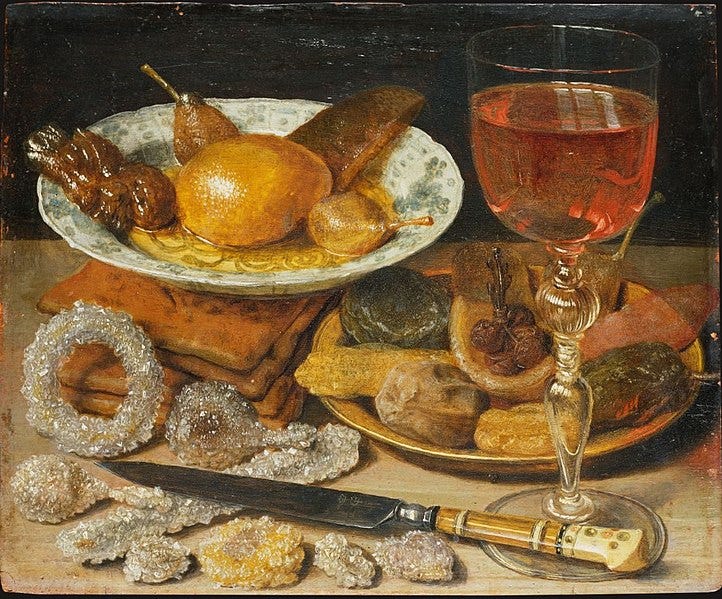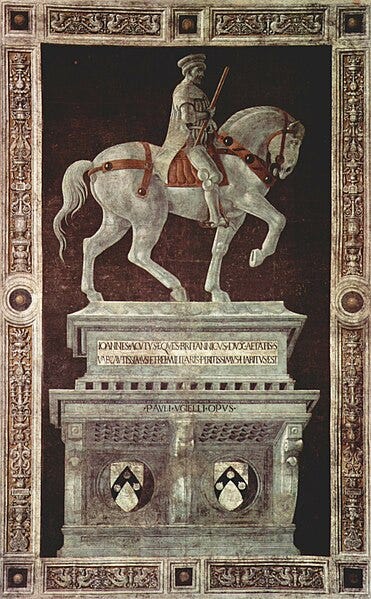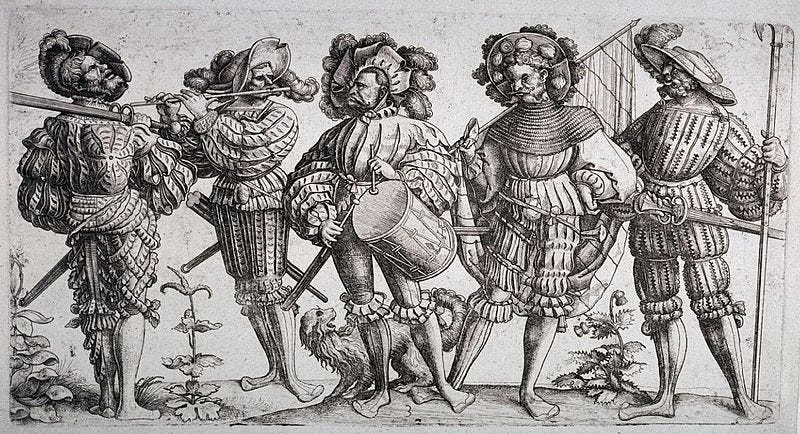On the table Week 5: Finally, sweets!
Cromwell knows a thing or two about food
Italian mystery: More fragments emerge
Lace, Stripes, fancy hats
On the table Week 5: Finally, sweets!
Lent had to come so that we could finally have something sweet at the table: Preserved autumn fruit, spiced wine, sugared almonds and candid quinces1. But before that you have to put up with smoked eel, salt cod and herring. Again. We no longer have an appetite for that.
Still life with Sweet Meals by Georg Flegel, ca. 1636
Cromwell knows a thing or two about food
In a previous chapter I noted with great pleasure that Cromwell is a friend of raisins2. He also appreciates garlic, but not too much. That's how it should be. He can recommend a recipe (I'll overlook the fact that it's a mint sauce, I'll allow Cromwell this culinary misstep.) His reference to the fact that you can't find 100 ways to cook an eel or cod makes me speculate that he's flipped through cookbooks before: In a German3 cookbook from 1581 I find this reference again: Each chapter on fish, for example, has the headings: “40 ways to prepare a pike” and underneath the recipes, “11 ways to prepare an eel”, and so on. This structure was probably not unusual in cookbooks at the time.
All of this leads me to the conclusion that Cromwell and I share an interest in and enjoyment of food. I’m delighted.
Chapter Heading from New Cookbook by Marx Rumpold, 1581: Eleven ways to prepare an eel
Italian mystery: More fragments emerge
Every now and then Hilary Mantel seems to give us something to dig up about Cromwell's time in Italy. (Hopefully there will be more, I'm standing by with a shovel in eager anticipation).
‘I looked at frescos every day’
In the course of supper at Bonvisi’s Cromwell thinks of Hawkwood. The English-born John Hawkwood (c.1323-1394) can be seen as a prime example of a successful mercenary leader in Italy. There is a fresco in his honor inside the Duomo Santa Maria del Fiore in Florence. So this was one of the frescoes that Cromwell must have seen in Florence.
Fresco: Funerary Monument to Sir John Hawkwood by Paolo Uccello, 1436. Ioannes Acutus eques brittanicus dux aetatis suae cautissimus et rei militaris peritissimus habitus est ("John Hawkwood, British knight, most prudent leader of his age and most expert in the art of war”).
Battle of Garigliano
Thanks to Uncle Norfolk's curiosity (and Cromwell is not yet in a position to answer questions from him with silence), we now know that Cromwell took part in the Battle of Garigliano, which took place on December 28 and 29, 1503, 60 kilometers from Naples. Cromwell must have been around 18 years old at the time and was very lucky to escape with his life. The battle against Spanish troops ended in a devastating defeat for the French mercenary army.
Lace, Stripes, fancy hats
In my imagination, Cromwell always wears black, sober, functional clothing. But what did he look like as a mercenary? Like in the picture? It's hard to imagine. But I can see him already providing his comrades with cloth, patches and the like. The humble beginning of fabric trade, building up knowledge about it? Five soldiers by Daniel Hopfer, 1530
And according to a cookbook from 1581, you don't have to worry if the candied quinces go moldy: "And if they go moldy, pour off the syrup and let it boil again and make the quinces new.”
Yes, of course they belong in bakeries, only those on the dark side of the culinary world dare to doubt this.
My English is unfortunately not good enough to read English cookbooks from that time.








I’m about to sketch out Crum at Garigliano. His Italian adventures are causing me chronological difficulties- but I put that down to him not wanting to reveal all.
Thanks for the information about the Battle of Garigliano!
I'm standing next to you with my shovel and while I also wait for more revelations about C.'s time in Italy, I'm admiring the frescoes ... ❤️🔥🤗